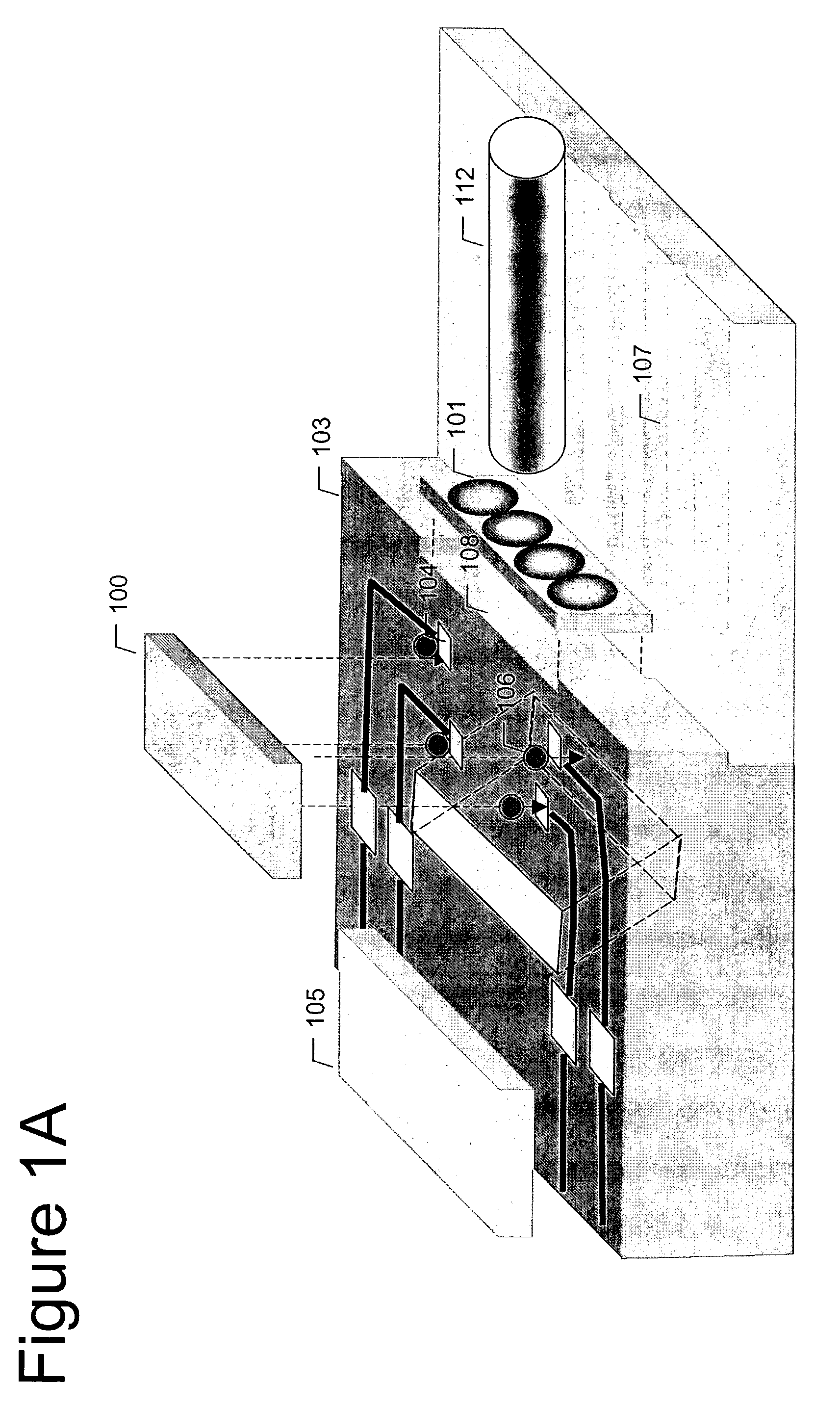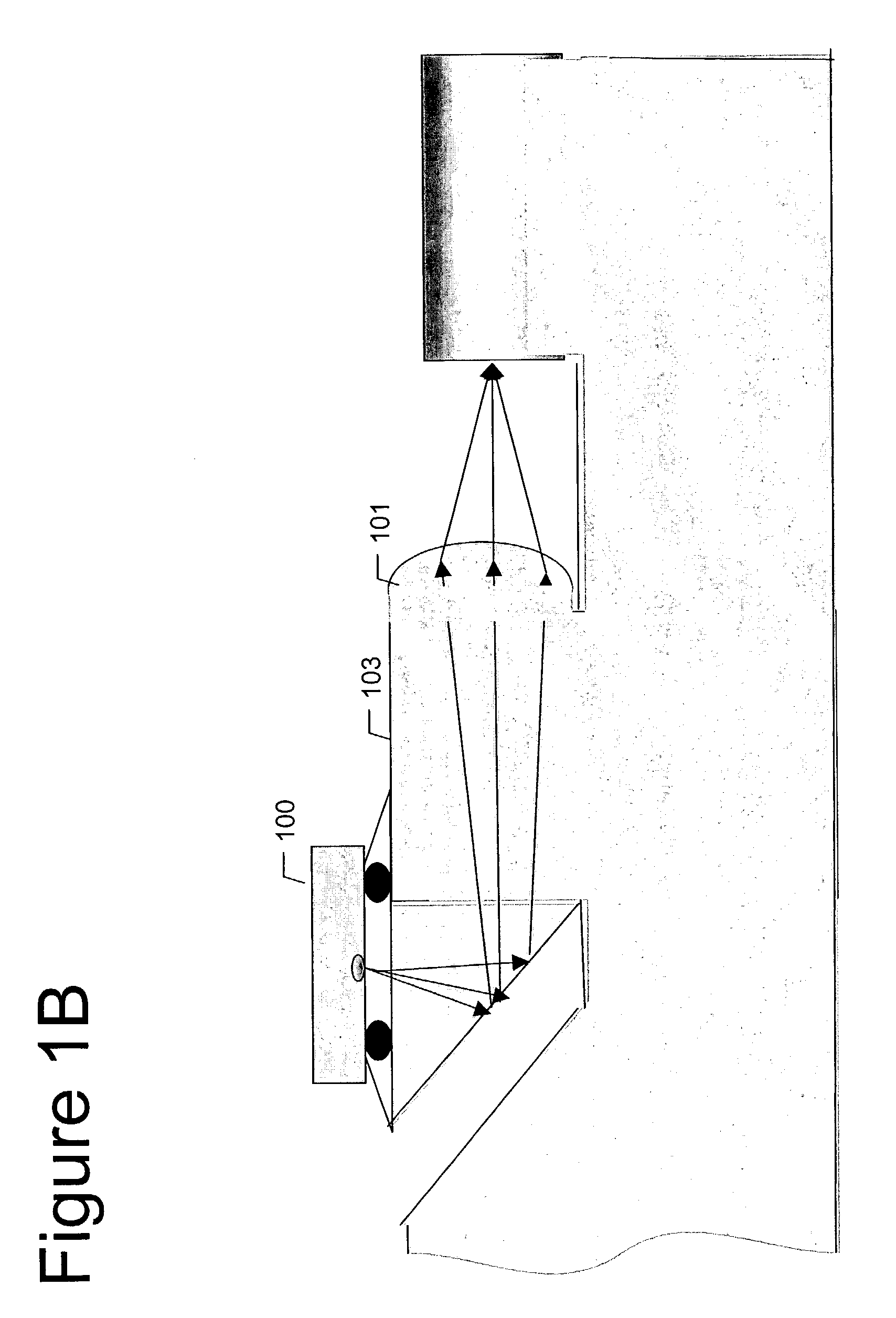Integrated platform for passive optical alignment of semiconductor device with optical fiber
a technology of integrated platform and optical fiber, which is applied in the field of packaging optoelectronic components, can solve the problems of high cost of manufacturing fiber optic interfaces, insensitive long-range communication systems, and high manufacturing cost of optical fiber interfaces, and achieves low cost, reduced alignment tolerances, and effective demagnification
- Summary
- Abstract
- Description
- Claims
- Application Information
AI Technical Summary
Benefits of technology
Problems solved by technology
Method used
Image
Examples
Embodiment Construction
[0039]According to one embodiment of the invention, a single platform is provided that reduces alignment tolerances through its integrated features. These features include a 45-degree mirror to deflect a laser beam from a vertical cavity surface emitting laser (VCSEL) transmitter toward an optical fiber, a focusing lens between the mirror and the fiber with an effective demagnification image at the fiber, and a v-shaped groove structure for receiving the optical fiber in the same platform. The platform may be manufactured inexpensively, such as by transfer / injection molding, grinding or polishing of glass and plastic material, depending on the particular application. The same principles may be applied where photodetectors are used for receiving the laser instead of transmitting the laser.
[0040]FIG. 1A depicts a three dimensional view of an integrated platform according to an embodiment of the present invention showing pads and interconnections for electrically and optically coupling...
PUM
 Login to View More
Login to View More Abstract
Description
Claims
Application Information
 Login to View More
Login to View More - R&D
- Intellectual Property
- Life Sciences
- Materials
- Tech Scout
- Unparalleled Data Quality
- Higher Quality Content
- 60% Fewer Hallucinations
Browse by: Latest US Patents, China's latest patents, Technical Efficacy Thesaurus, Application Domain, Technology Topic, Popular Technical Reports.
© 2025 PatSnap. All rights reserved.Legal|Privacy policy|Modern Slavery Act Transparency Statement|Sitemap|About US| Contact US: help@patsnap.com



